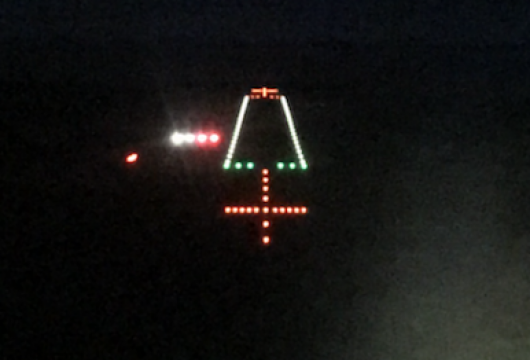The AV-426 are an ideal choice in a remote location as they are independent and solar powered. By being standalone and communicating by a self-realizing and self-maintaining mesh network, lights can be added, removed or relocated as required without the system needing to be shut down and without major groundworks costs typically associated with the upgrade of an AGL system. With the integration of a Pilot Activated Lighting Controller, it removes the responsibility of activating the lighting from the ground crew and gives the pilots control. However, there is a need for the ground crew to be able to activate the lights in an emergency, by as simple means as possible. Additional requirements included an aerodrome beacon to attract the eye of a pilot unfamiliar with the area (for example Life Flight on an emergency Medevac) and a warning beacon to indicate that there is less than 10 minutes remaining before the airfield lights are extinguished. This combination of requirements led to the design of a control box, which integrated the PALC, warning and aerodrome beacons, and simple manual on/off and intensity control.
Reid Technology also provided the solar system for the PAPIs, along with a containerised workshop powered by solar to facilitate ongoing maintenance.
